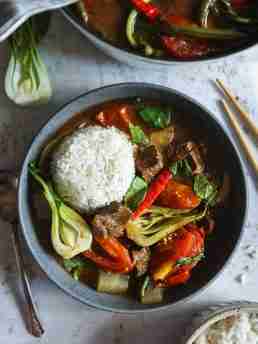Filipino Recipes
Filipino cuisine offers a little bit of everything for everyone. With a special penchant for balancing diverse flavors and incredible local ingredients, these dishes are irresistible contributions to the world.
At its heart, Filipino food is one of contrasts. Umami with sour. Sweet with salty. It’s also one of endless variety and experimentation, thanks to the confluence of cultural influences on its food. Finally, it is defined by a culture that treats meal times as special moments to come together.
The Secrets of Filipino Cooking
Filipino cooking contains many special elements that help produce its signature flavors:
- Vinegar: The acidity of vinegar provides immediate flavor, but it can also work as a preservative. And Filipino cooking makes use of the subtle differences between varieties like coconut, cane, and palm vinegar.
- Sauces: The use of sauces that deliver major umami is key to Filipino cooking—think of soy sauce and fish sauce in particular. These give your dish immediate depth.
- Fresh Ingredients: Fresh-caught seafood and locally harvested vegetables are essential to get the full Filipino experience. These fresh ingredients make even the simplest dishes explode with flavor.
- Fermentation: This process preserves food but while transforming it. The flavor of fermented fish (used to make bagoong) and mango (in burong mangga) create massive contributions to any dish. Though, it should be noted, some eaters will need a period of getting used to it.
- Rice: This is the staple that so many Filipino main dishes are served on. Garlic-infused sinangag or festive paella-style bringhe are mainstays in the Philippines. And rice can even be used to produce delicious desserts like bibingka.
- Diverse Influences: The Philippines are a fusion of indigenous, Spanish, Chinese, and American cuisines. These are constantly combined in startling ways and reimagined using local ingredients.
Bringing It Together
When we see a standard Filipino dish, we can witness these elements coming together. Take, for example, adobo. We start with chicken or pork. These pieces get bathed in a mix of vinegar, soy sauce, garlic, and spices. Chefs then slowly stew it until everything’s just perfect.
This flavorful, delectably cooked meat can then be served on rice to capture more of the flavor and provide it with a launch pad.
You’ll also notice that adobo, perhaps the most popular export of Filipino cuisine, is so easy to share. That’s because the local food culture emphasizes eating meals together. You can easily create an abundance of adobo and a giant pot of rice. Then, gather around a table to celebrate, share stories, and spend quality time together.
The Philippines offer the world a cuisine that brings local ingredients and techniques into vivid conversation with international influences. Such a tradition is bound to give us dishes that are known the world over for their complexity and balance.

